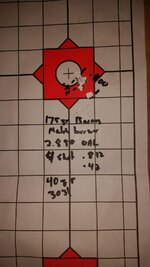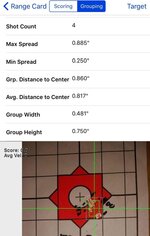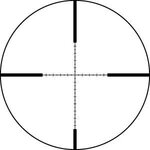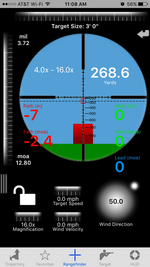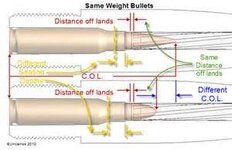- Messages
- 680
- Reactions
- 1,266
Dyjital, I had a few thoughts on what might put your new load into a one hole group. There are a few last variables you could eliminate (if you haven't already)
So you may already know about these techniques. They add extra steps and work; I don't employ them regularly (not in my AR-10 rounds anyways). But when shooting for extreme accuracy in bolt guns and bench style shooting, these are steps competitors take to make their rounds consistent. And consistency (eliminating variables) leads to repeatable performance and then not only accuracy, but precision.
Hope this helps~
P.S. I realize the bullet seater works on the ogive, not from the tip, but either meplat pointing or uniforming still has it's advantages, giving a (potentially) consistent b.c. Usually these steps are taken when shooting long range, as that's where the differences really show, but if you wanted to pull out all the stops in getting a single hole group, than look for variables you can eliminate, as well as standardize your steps in your reloading and shooting so to create consistency in all aspects possible.
- Weighing and sizing your bullets would create some uniformity and consistency by cherry picking bullets from your batch that are as equal in all dimensions to each other as possible.
- But even before you size your bullets, using a meplat uniformer would eliminate, (when used with a regular hand after some practice) the variance that HP match bullets have in their points (like you said, the tips are unreliably different. I've found as much as 0.010 and sometimes more among a box of SMK's). Even though you're measuring from the ogive with a comparator, that doesn't change the variances in the hollow point and OAL, which creates variance in your ballistic coefficient from round to round.
So you may already know about these techniques. They add extra steps and work; I don't employ them regularly (not in my AR-10 rounds anyways). But when shooting for extreme accuracy in bolt guns and bench style shooting, these are steps competitors take to make their rounds consistent. And consistency (eliminating variables) leads to repeatable performance and then not only accuracy, but precision.
Hope this helps~
P.S. I realize the bullet seater works on the ogive, not from the tip, but either meplat pointing or uniforming still has it's advantages, giving a (potentially) consistent b.c. Usually these steps are taken when shooting long range, as that's where the differences really show, but if you wanted to pull out all the stops in getting a single hole group, than look for variables you can eliminate, as well as standardize your steps in your reloading and shooting so to create consistency in all aspects possible.
Last Edited:






